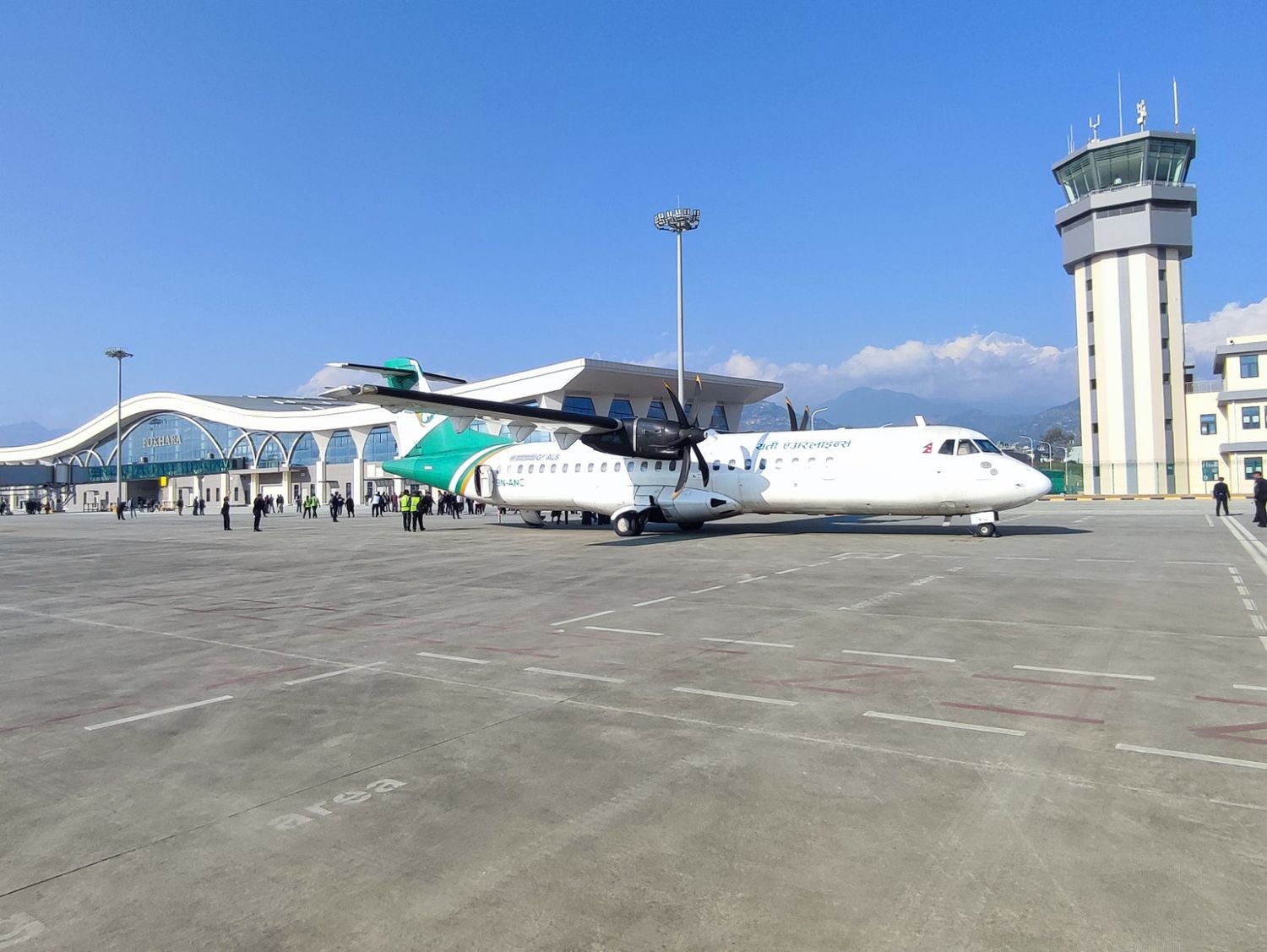Nepal Commission Report Sheds Light on Yeti Airlines ATR 72-500 Crash near Pokhara Airport
Finally, the Nepal Air Accident Investigation Commission has released the preliminary report on the crash of a Yeti Airlines ATR 72-500, which went down near Pokhara airport on January 15, 2023.
According to preliminary data in the report, which is subject to change as the investigation continues its course, a cockpit mix-up caused both engines to be feathered: that is, they were not delivering thrust or torque to the aircraft.
According to the report, the aircraft, registration 9N-ANC, was flying between Kathmandu (VNKT) and Pokhara International Airport (VNPR). The same flight crew was scheduled to fly two sectors between VNKT to VNPR and VNPR to VNKT – four flights – earlier in the morning.
The accident flight, NYT 691, was the third flight flown by the crew members that day. Two captains operated the flight: one captain was undergoing aerodrome familiarization to operate at Pokhara and the other captain was the instructor pilot.
The captain under familiarization, occupying the left seat, was the Pilot Flying (PF) and the instructor pilot, occupying the right seat, was the Pilot Monitoring (PM).
The document indicates that the takeoff from Kathmandu, climb, cruise and descent to Pokhara was normal. During the first contact with the Pokhara tower the Air Traffic Controller (ATC) assigned runway 30 for landing. But during subsequent phases of the flight the crew requested and received clearance from ATC to land on runway 12.
At 10:51:36, the aircraft descended from 6,500 feet five miles short of VNPR and entered the tailwind path for runway 12 north of the runway.
The aircraft was visually identified by Air Traffic Control during the approach. At 10:56:12, the pilots extended the flaps to the 15-degree position and operated the landing gear lever to lower the landing gear.
The takeoff (TO) setting was selected on the power management panel. At 10:56:27, the PF disengaged the autopilot (AP) system at an altitude of 721 feet (219 meters) above ground level. The PF then requested «FLAPS 30» at 10:56:32, and the PM responded «Flaps 30 and descending.»
Flight Data Recorder (FDR) data did not record any flap surface movement at that time. Instead, the propeller rotational speed (Np) of both engines simultaneously decreased to less than 25% 1 and the engine torque began to decrease to 0%, consistent with both propellers entering the feathered condition.
A single Master Caution was recorded on the Cockpit Voice Recorder (CVR) at 10:56:36 hours. The flight crew then conducted the Before Landing Checklist prior to initiating the left turn.
During that time, the power stick angle increased from 41% to 44%. At that time, the power of both propellers was recorded as insufficient to deliver data (Non-Computed Data – NCD) on the FDR and the torque of both engines was at 0%.
This behavior of the Flight Data Recorder is consistent with the engines being underpowered, since by design it stops gathering data when the power is less than 25%.
According to the FDR data, all recorded parameters related to the engines showed no anomalies. At 10:56:50 when the five hundred feet (150 meters) altitude warning was announced over the radio, another «click» was heard, which the investigation team associates with a crew action to inhibit the Master Caution alert.
The PF asked the PM whether to continue the left turn and the PM responded in the affirmative. Subsequently, the PF queried the PM on whether to continue descending and the PM responded that it was not necessary and instructed to apply some power. At 10:56:54, another click was heard, followed by movement of the flap surface to the 30-degree position.
When air traffic control gave clearance to land at 10:57:07, the PM mentioned twice that he had no power in the engines. At 10:57:11, the power levers were moved first to 62 degrees and then to the full power position. A «click» was heard at 10:57:16.
The PF turned control of the aircraft over to the PM at 10:57:18. At 10:57:20, the PM (who was formerly the PF) repeated that the engines were delivering no power.
At 10:57:24, when the aircraft was 95 meters above the ground, the stick shaker was activated warning the crew that the aircraft’s angle of attack (AoA) had increased to the stall threshold.
At 10:57:26, a second stick shaker warning sequence was activated when the aircraft banked sharply to the left. The radio altitude warning for two hundred feet (60 meters) was heard and the stall warning and stick shaker ceased.
At 10:57:32 the impact sound was heard on the CVR. The FDR and CVR stopped recording at 10:57:33 and 10:57:35 respectively.
The investigation should continue its course to deliver its conclusions in the accident final report. On the morning of January 15, 2023, 72 people lost their lives.


Comentarios
Para comentar, debés estar registrado
Por favor, iniciá sesión